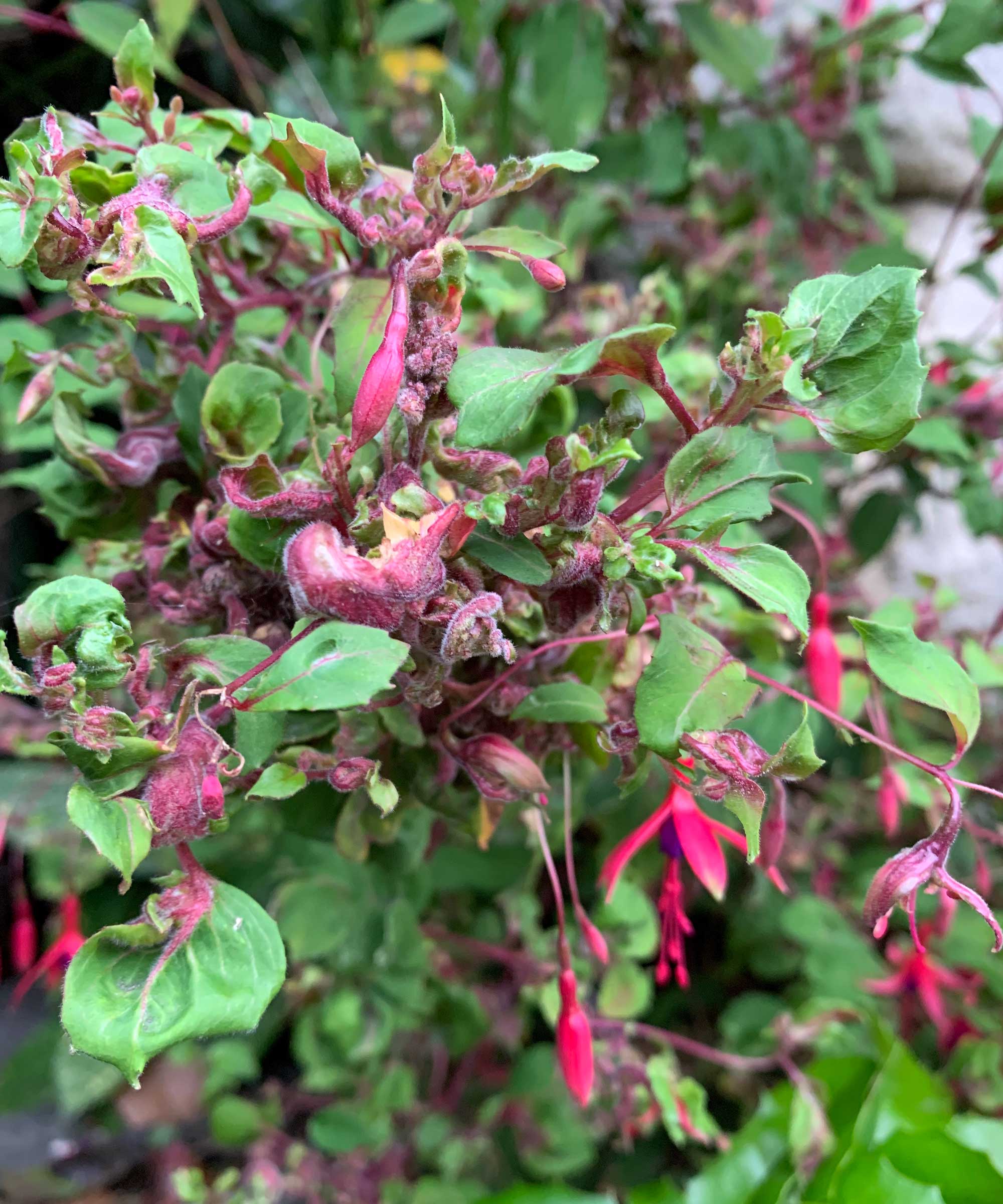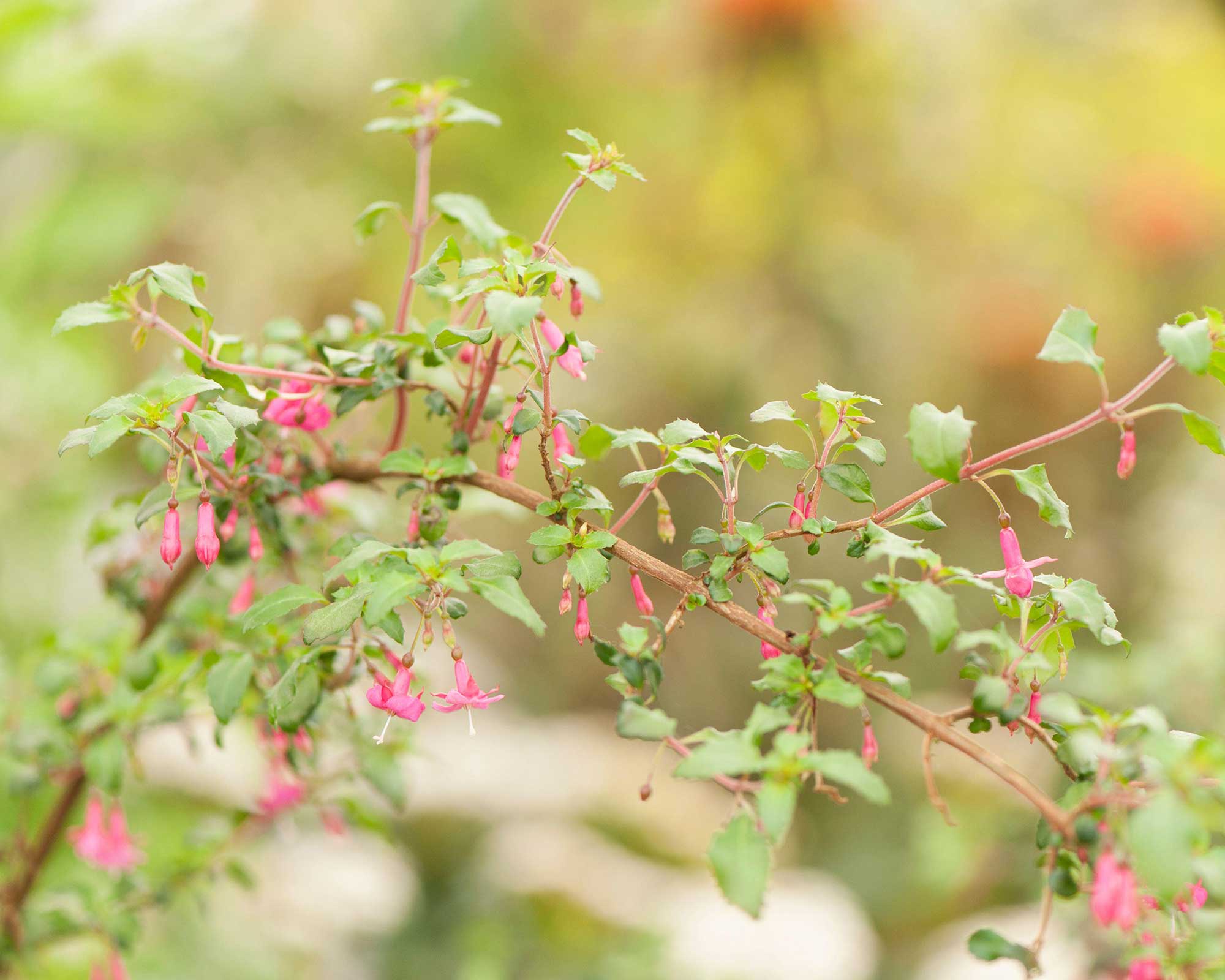Fuchsia gall mites: how to identify and get rid of these pests
If your shrubs have succumbed to fuchsia gall mites, don't panic – we explain how to deal with them effectively


Have you heard of fuchsia gall mites? If you're growing these pretty shrubs in your garden – whether that's in containers or borders – you'll want to keep an eye out for these nuisance pests.
Learning how to grow fuchsias is relatively easy until an infestation of these insects takes hold. Notoriously difficult to control, they have become an increasing problem for gardeners over the past 10 years, spoiling the appearance of these beloved shrubs and their ballerina-like blooms.
But, battling the bugs isn't impossible. We've provided all the info you need to save your fuchsias from these intruders.
How to identify fuchsia gall mites on your plants
Fuchsia gall mites are mainly active between early summer to early fall. They are tiny – only 0.20–0.25mm long – meaning you won't be able to spot them without a microscope. The damage they cause, however, is hard to miss.
Although they aren't fatal to plants, these pests drastically spoil their appearance and have detrimental effects on their growth.
They have needle-like mouth parts which they use to suck sap from plant cells. They also secrete chemicals that prevent the normal formation of flowers and leaves. 'Infestation results in a mass of deformed tissue at the shoot tips,' explains John Negus, a gardening expert from Amateur Gardening magazine. The flowers can also become distorted, or fail to develop entirely, and the leaves can take on a reddish hue.

How to treat fuchsia gall mites
Assuming that the plant is hardy, take your best secateurs and cut back infested shoots to near ground level and bin or burn prunings.
You can then spray the remaining plant with a bug killer for ornamental plants. However, not all of them will do the job: only ones that are recommended for controlling red spider mites are reasonably effective against fuchsia gall mites, says John. You may need to repeat applications – check the label for instructions.
With any luck, new, uninfested growth will appear in due course. 'If, however, the infestation is severe, remove and bin the entire plant,' he adds.
'Additionally, to reduce risk of spreading this pest when cutting back the plant, thoroughly clean and disinfect pruners when you move from one plant to another,' John continues.
The RHS also notes how a predatory mite (Amblyseius andersoni) is sold as a biological control of the fuchsia gall mite. Infested areas should be cut out to a minimum of 4in (10cm) below the affected growth before introducing the predators – this way, they will prevent the mites from causing damage to the plant's regrowth.

Are there any types of fuchsia that are resistant to fuchsia gall mites?
There are some varieties of fuchsia that are semi-resistant to fuchsia gall mites. These include 'Baby Chang', 'Cinnabarina', 'Miniature Jewels', 'Space Shuttle', Fuchsia microphylla subsp. hidalgensis, Fuchsia thymifolia, and Fuchsia venusta, lists the RHS.
So, if you want to reduce the risk of these pests sabotaging your shrubs, try planting these in your flower beds and pots instead.


The garden was always a big part of Holly's life growing up, as was the surrounding New Forest where she lived. Her appreciation for the great outdoors has only grown since then. She's been an allotment keeper, a professional gardener, and a botanical illustrator – plants are her passion.
